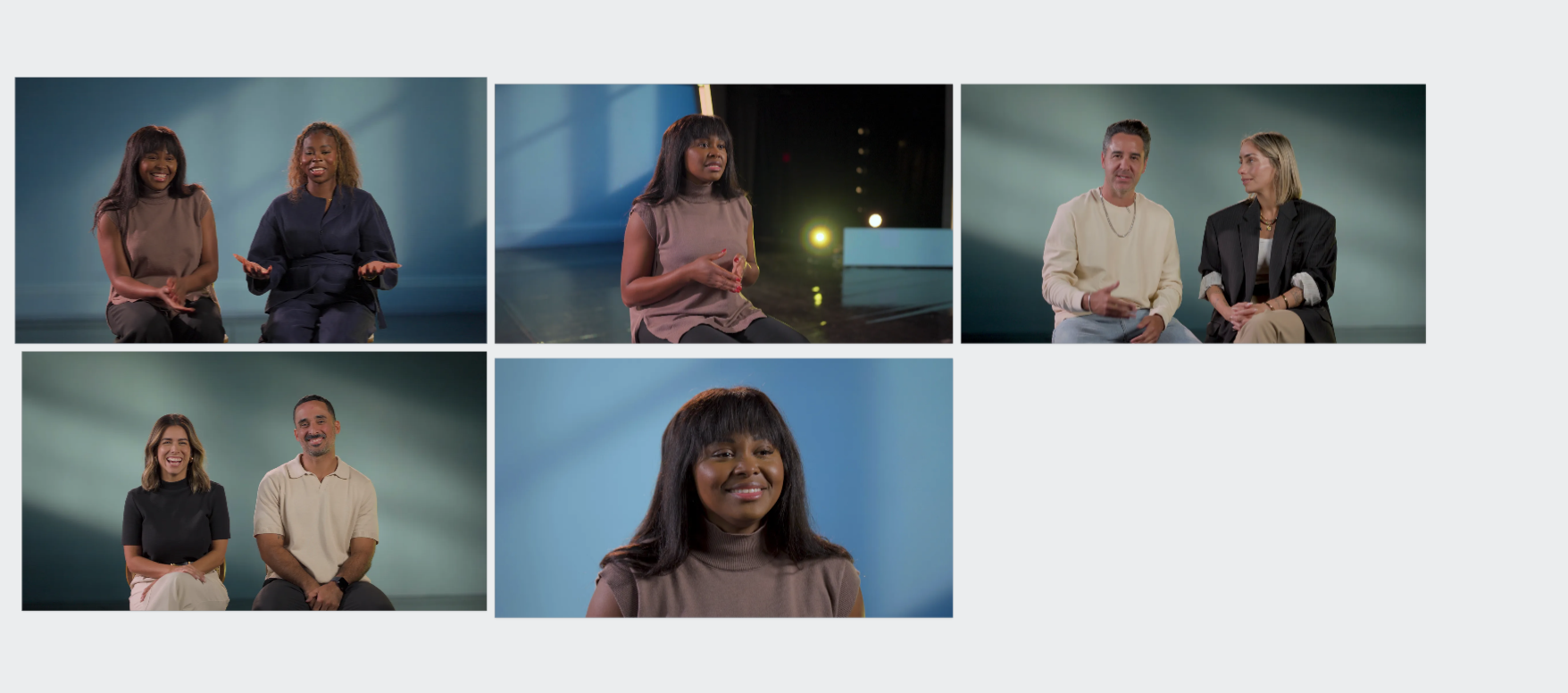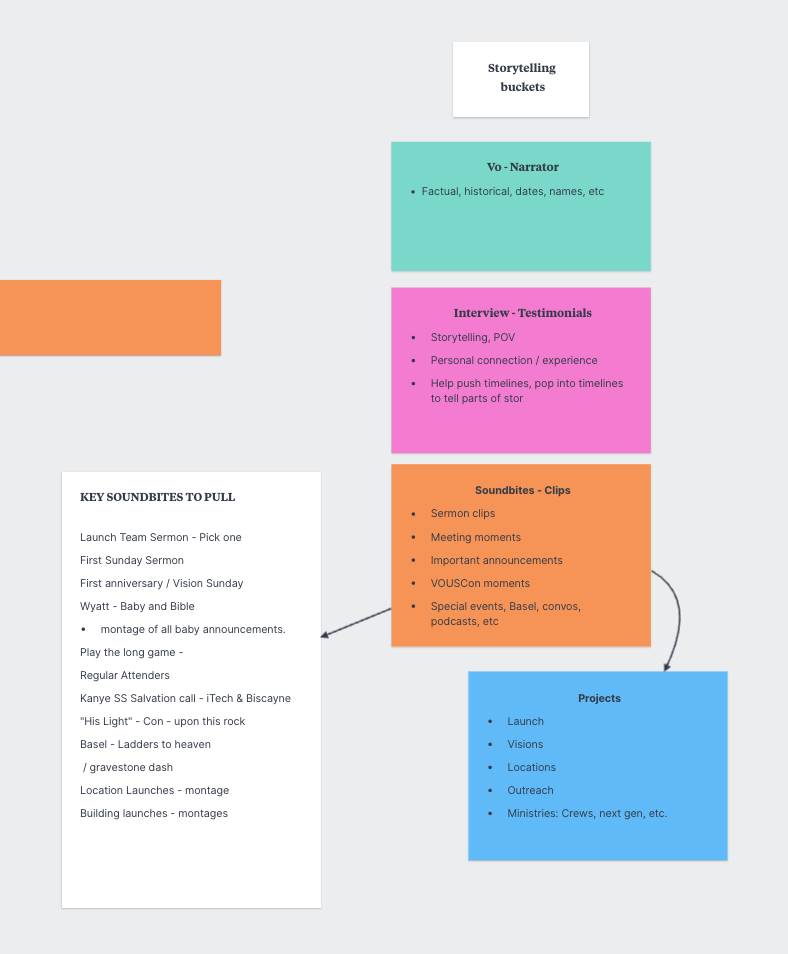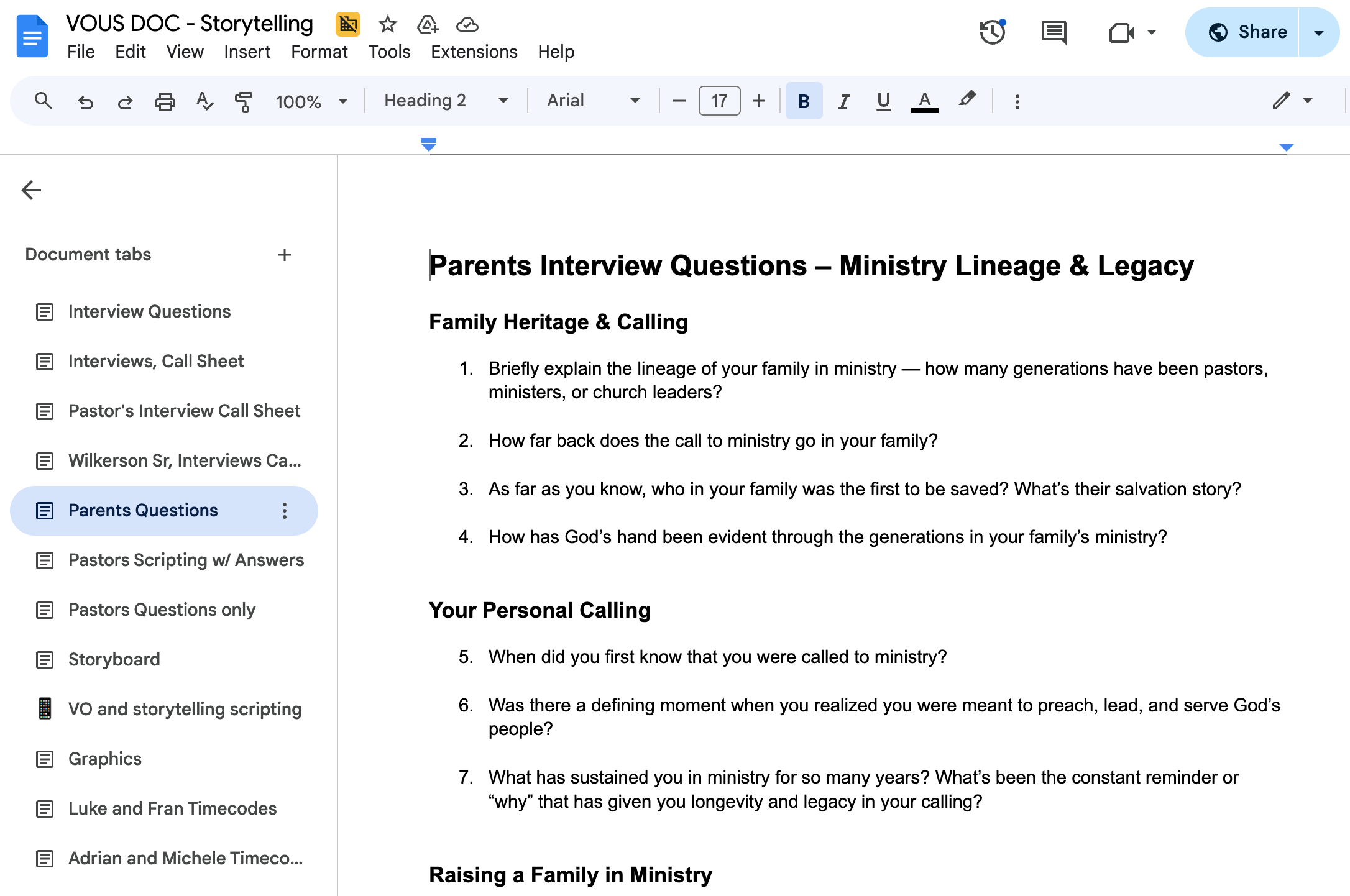When VOUS Church celebrated its tenth anniversary, the creative team faced a unique challenge: how do you capture a decade of God’s faithfulness in one film?
Over ten years, VOUS had seen countless Sundays, baptisms, and VOUSCon moments – each carrying its own story of transformation. “When you step back and reflect on everything we’ve been privileged to witness, you can’t help but be overwhelmed,” says Greg Burgess from the VOUS Film Team. “We wanted to make something that would remind people of where we’ve come from, why we started, and what God has done through our community.”
The result was Into the Night: The Story of VOUS, the church’s first full-length film project, produced entirely in-house by the VOUS Film Team. What began as a creative assignment quickly became a spiritual journey of remembrance and renewal.
.jpg)
“It was more than a film,” Burgess reflects. “It was a moment for people to pause, look back and see God’s hand in their own stories.”
When the 37-minute documentary premiered on Sunday the impact went far beyond the screen. The film sparked laughter, tears and deep reflection – and that day, 187 people made a decision to follow Jesus.
Below is an inside look at the process, lessons learned, and practical steps for churches and creative teams who want to tell their own story of God’s faithfulness.
Step 0: Begin with Prayer
For the VOUS Film Team, every project begins the same way – with prayer.
"Prayer isn't just a creative exercise for us," says Burgess. "It's our first response, not our last resort."
Throughout production, moments of prayer grounded the team and invited the Holy Spirit into the creative process. “We wanted God to breathe on this project in ways we never could through planning alone.”
Step 1: Ideation and Exploration
Before cameras rolled, the team focused on defining the “why.” The mission was clear: to tell the story of God’s faithfulness through the life of VOUS Church.
Using creative collaboration tools like Milanote, the team gathered references, visual inspiration, and documentary examples that captured the tone they wanted. The goal was to “begin with the end in mind” by chapping the emotional journey the viewer would take from the very beginning.






Step 2: Storyboarding the Vision
"Storyboarding is where your film truly begins," Burgess explains. "It's more important than the perfect camera or location - it's about defining the story you want to tell."
The team outlined the film as a series of acts:
- Intro: Setting the tone
- Act 0: History
- Act 1: Launch Days
- Act 2: Pandemic, Relaunch & Expansion
- Act 3: Present Day
- Outro: The Church We See - casting vision for the future
This framework guided every interview, edit and creative decision that followed.
Step 3: Pre-Production & Production
Once the structure was set, it was time to gather storytellers – pastors, launch team members and leaders who have lived the journey firsthand.
Each interview was guided by intentional questions linked to key milestones in the church’s timeline. The team aimed for emotion, honesty and connection. “Firsthand accounts are what make people lean in,” Burgess notes. “It’s not just history – it’s heart.”

Production spanned several months, combining interviews, archival footage and newly captured visuals that reflected VOUS’s mission to bring the gospel to life.
.jpeg)
Step 4: Organizing the Story
With hours of footage and interviews recorded, the next step was shaping the narrative. The team developed a detailed voiceover script and used transcripts to identify recurring themes.
Technology helped streamline the process, including tools like ChatGPT, which assisted in indexing interview transcripts by timecode and keyword. This allowed editors to quickly find moments that aligned with the story’s structure.
“We could finally see the full picture,” Burgess said.
Step 5: Post-Production
Editing a feature-length documentary required a full-team effort. Multiple editors collaborated across different “acts” of the story, working in layers to refine tone, pacing and flow.
Burgess describes it as a two-tier process: “Junior editors would handle structure and story – getting the bones right. Then lead editors refined tone, music and emotion. It became a beautiful rhythm of teamwork.”
Step 6: Review & Feedback
Each stage went through defined review rounds with Creative and Executive oversight. The team used feedback sheets with time-coded notes for clarity and accountability, helping streamline revisions through ten total drafts.
Setting expectations was key: “You don’t want people reviewing a rough cut and thinking it’s final. Define what’s ready for feedback and what’s still in progress.”
Step 7: Final Touches
With story and music licked, final steps included audio engineering, color correcting, and B-roll integration to visually amplify the message.
“Don’t underestimate the power of great sound,” Burgess emphasizes. "It's what draws people in emotionally.” The team also prioritized visuals that showed transformation rather than just telling it.
Step 8: Release & Distribution
The team treated the film’s release like a campaign – not just a video drop. A full rollout plan included a dedicated Sunday premiere, email invites and social media clips on Instagram.
"You can make something incredible, but if no one sees it, the story stops at upload," Burgess says. "We wanted everyone in our church, and beyond, to be apart of it."
Step 9: Pray Again
After months of planning, filming and editing, the team returned to where they started – prayer. “You do your best, and then give it back to God,” Burgess reflects. “That’s when He does what we can’t.”
Legacy in Motion
Into the Night: The Story of VOUS became more than a look back – it became a collective moment of gratitude and faith for the future.
Through laughter, tears and testimony, the film reminded thousands that the story of VOUS is ultimately the story of God’s faithfulness.
And for churches and creatives everywhere, Burgess offers this encouragement:
"You may not have all the gear, budget or experience but if you have a story of God's goodness, you have everything you need to begin."
Every church has a story worth telling. It doesn’t require a film studio, just faith, creativity and a willingness to remember what God has done.
“It’s not about creating content,” Burgess says, “It’s about creating space for gratitude, for people to see God’s faithfulness in motion.”






